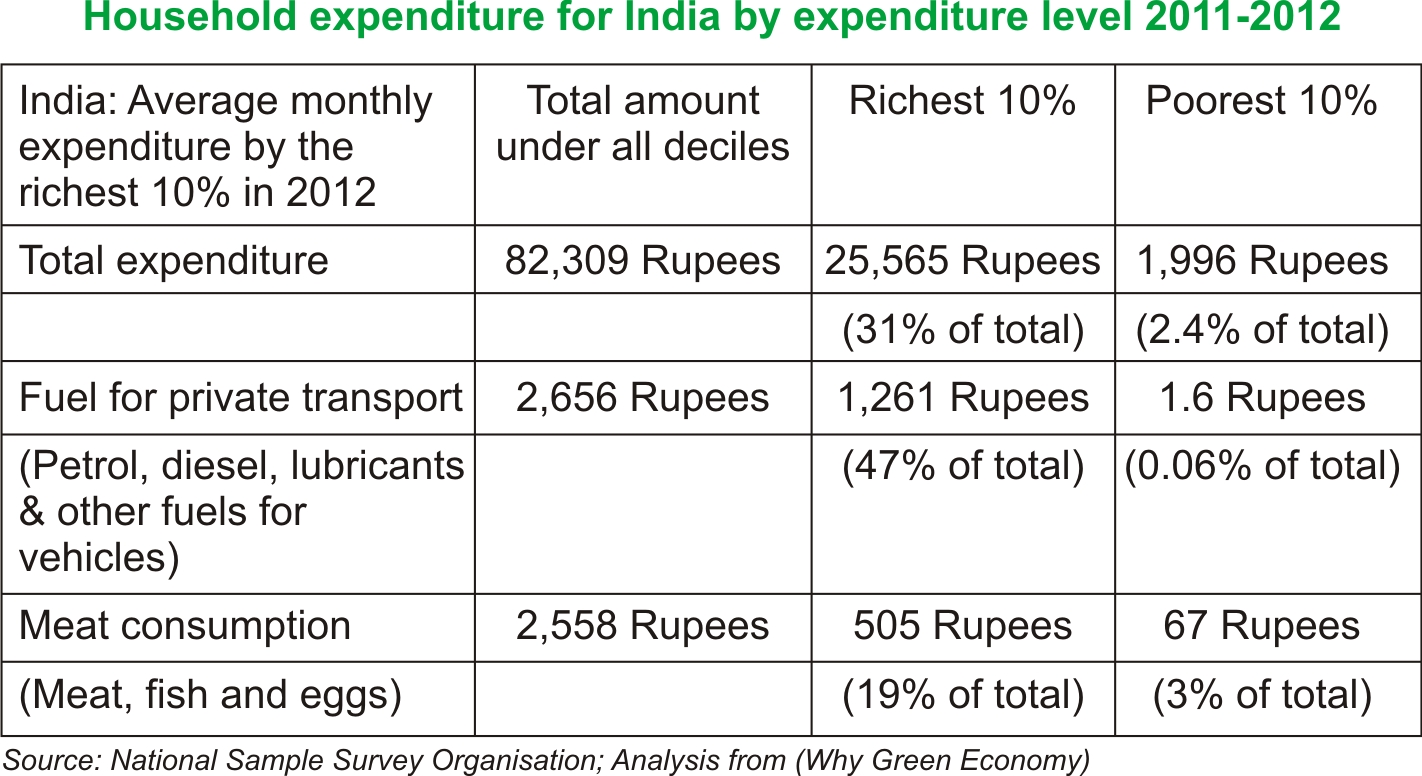Investing in People in
India's
Transition towards Sustainability
Current
economic models have failed to deliver well-being to the people, despite the
paradox of apparently high rates of growth. The idea of 'people' becomes a
powerful way to tangibilise the outcomes of a sustainable economy.
Therefore, 'investing in people' becomes a way  of
making people the centre of the sustainable economy agenda.
of
making people the centre of the sustainable economy agenda.
Investing in people should be defined by an agenda that goes beyond mere technological fixes of the short-term and business-as-usual approaches. At present, investing in people mainly relates to the issue of equity the idea that a transition to a low consumption and sustainable production pathway does not compromise the needs of the less well-off people in the world especially in the developing countries. A glaring example of inequity can be seen from the fact that the world extracts 50% more raw materials today than it did in 1980; yet 80% of this is consumed by the wealthiest 20%.
This means that the issue of equity should address the problem of 'resource grab', where resources like land, water, air, fisheries and others are cornered by the rich. This often translates into a conflict between people and the environment.
According to a Livemint report, The number of jobs created in 2015 is much less than what it was a few years ago. As mechanisation of agriculture and manufacturing is moving at a faster pace and the services sector is becoming more skill-oriented, fewer jobs are being created which can match the existing skill level of the vast majority. Consequently, it is not difficult to surmise that while India's gross domestic product (GDP) is growing, such growth is increasingly becoming exclusionary. Much of India's growth is emanating from services, and taking place in sectors which require middle- to high-level skills.
Therefore, in the Indian context, the key to intervention in the new economic paradigm includes livelihood security and basic needs fulfillment for all in an equitable manner, preventing human rights abuse and displacement in development projects, addressing corruption and political hurdles, reforming the financial and services sector, and creating market linkages in critical sectors while ensuring businesses' commitment to people.
The government is leveraging several existing economic resources to create a more sustainable pathway for the people. This is being done through:
A Rights-Based Approach: The government is increasingly being compelled to adopt a rights-based approach to development, thanks to the government-civil society synergies. One of the landmark recent issues in this regard has been the Forest Rights Act protections, with a renewed vigour in implementing the Forest Rights Act a key law for protecting the livelihoods of people dependent on forest produce. The government will mainly use technology to survey the details of forest land owned and create more awareness. The Forest Rights Act has the potential to give an estimated 150 million people rights over at least 40 million hectares (100 million acres) of forested land.
Enhancing Citizen Participation: NITI Aayog proposes to launch a programme involving citizens of India for the key challenges facing the country and to develop the social sector by innovating ideas and solutions through the Atal Grand Challenge Awards, with the objective of developing novel solutions that are ultra-low cost, low maintenance, durable and customised to the local conditions of India.
However, despite this, there are several current gaps that the government needs to address. The Tribal Committee Report of 2014 mounts a scathing attack on India's development path by stating that about 40% of all people displaced in India due to development activity have been tribals (pegged at 24 million), even though they constitute less than 10% of the total population. Only 21.16% of these have been resettled (though most have not been rehabilitated).
Therefore, India needs to urgently reform its developmental pathway from its current skewed, unjust trajectory. ■
Garima
Maheshwari
gmaheshwari@devalt.org
References:
Christian Aid. (n.d.). Christian Aid. Retrieved January 11, 2017, from
https://www.christian aid.org.uk/images/constrained-world.pdf
Mehta, P. S. (2016, November 15). Livemint. Retrieved January 6, 2017, from
http://www.livemint.com/Opinion/Nbr8ICcpgJbJJrBgyBROwJ/Improving-Indias-job-creation-ranking.html
Why Green Economy. (n.d.). Retrieved from
http://whygreeneconomy.org/information/ecological-footprint-of-the-richest-india-country-profile/